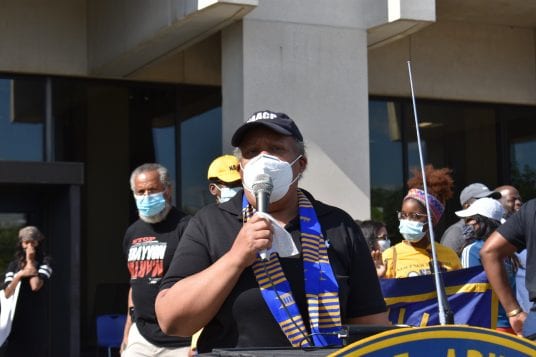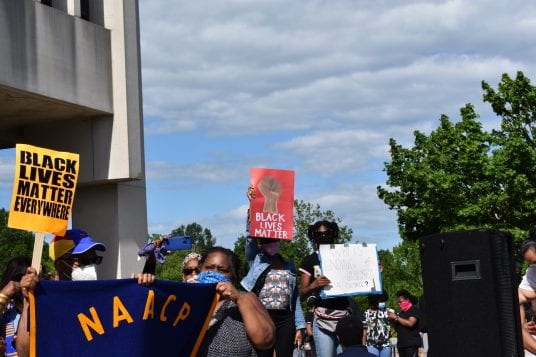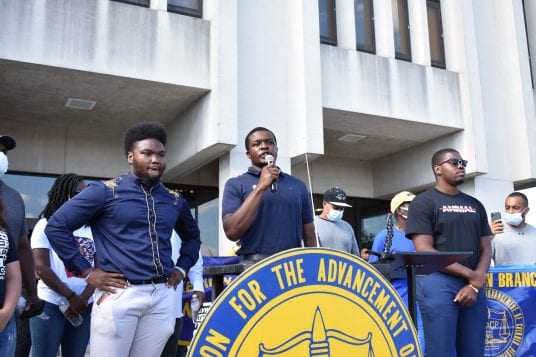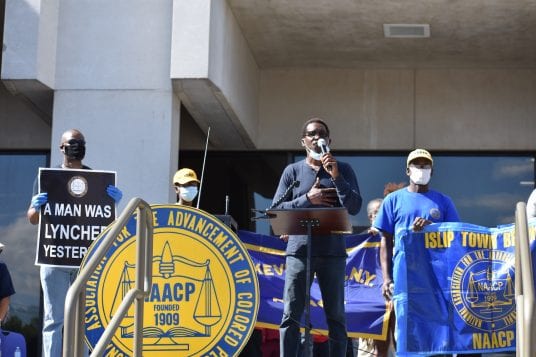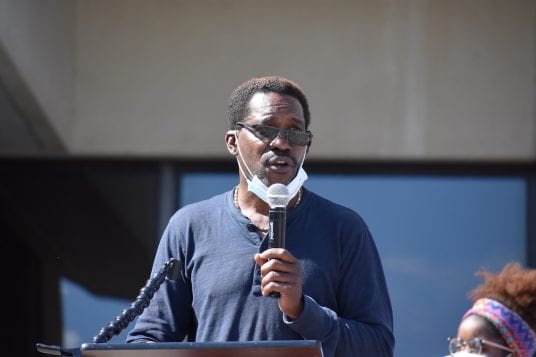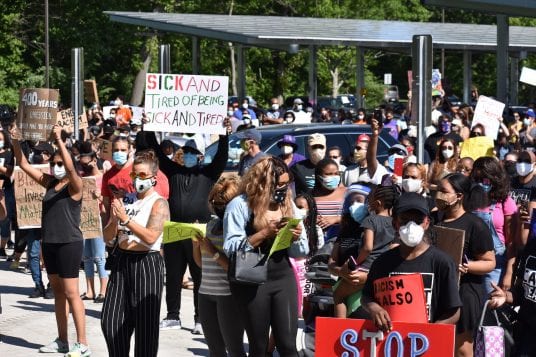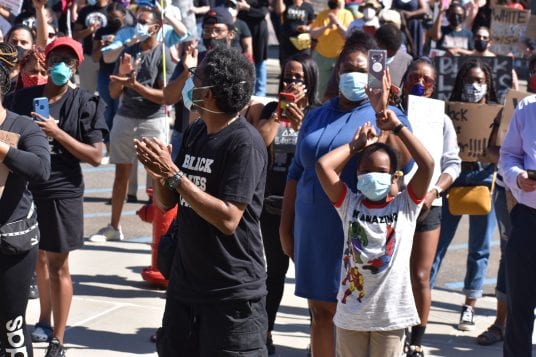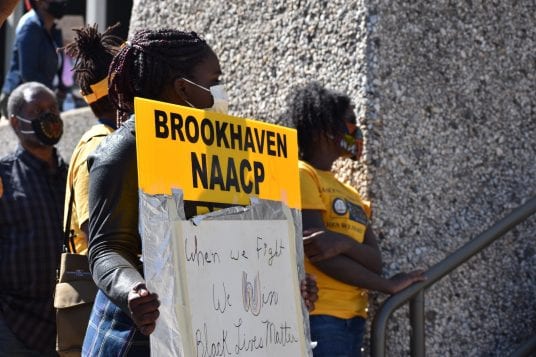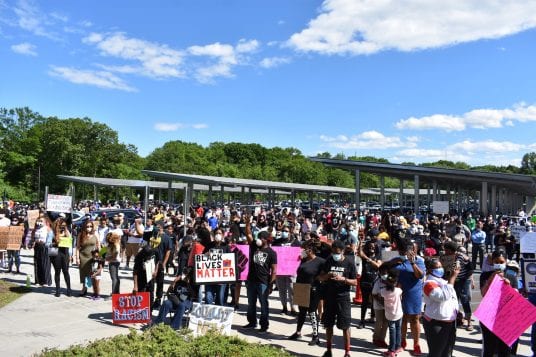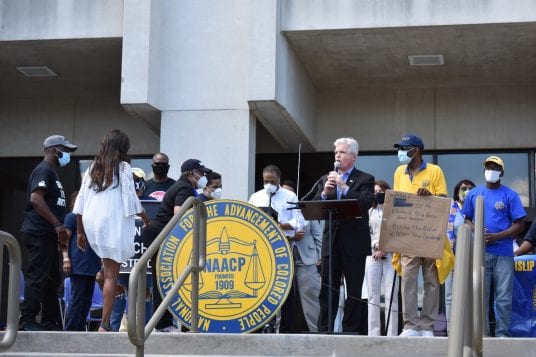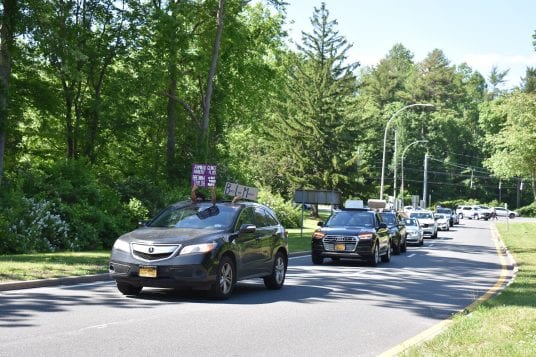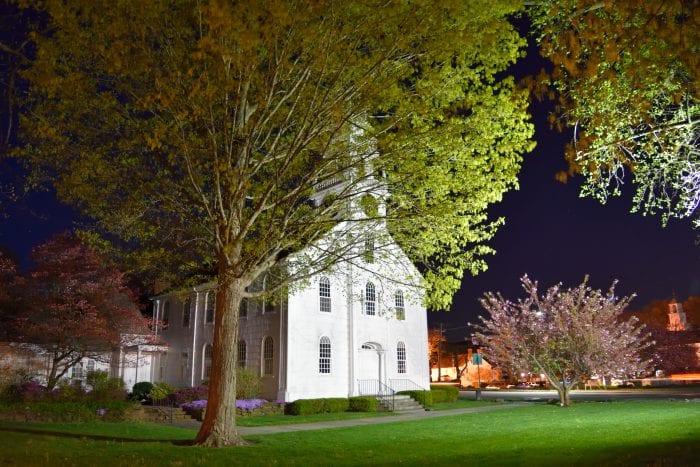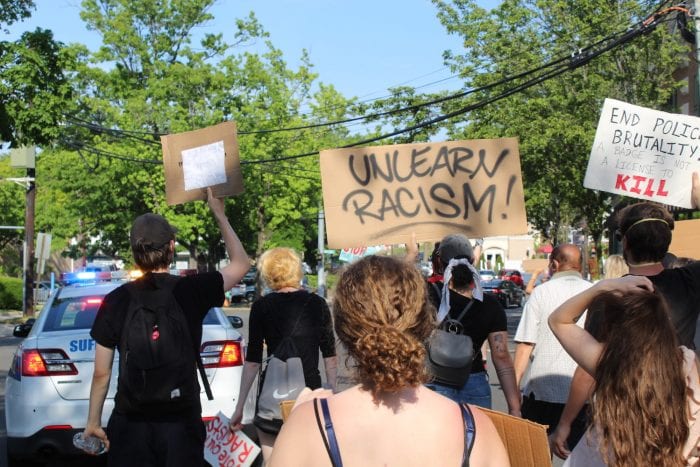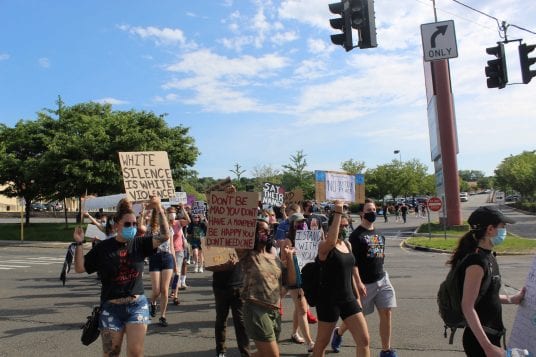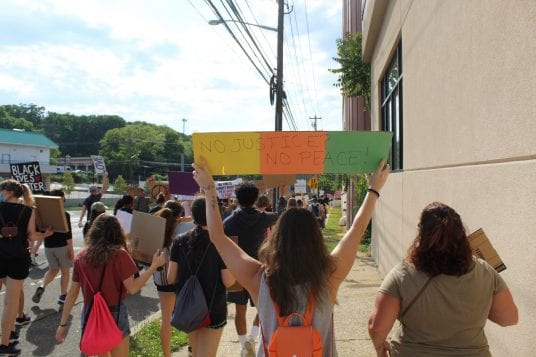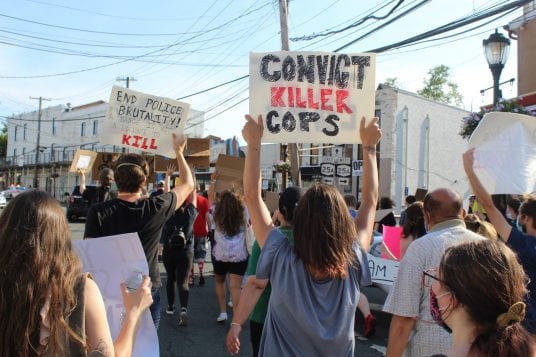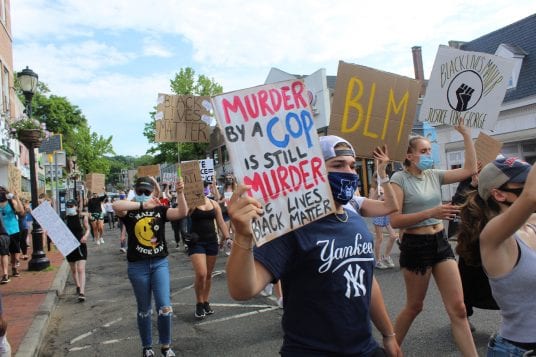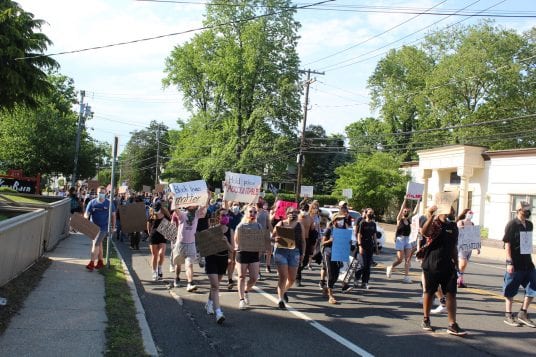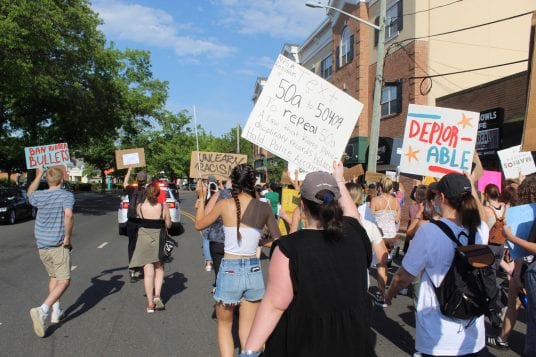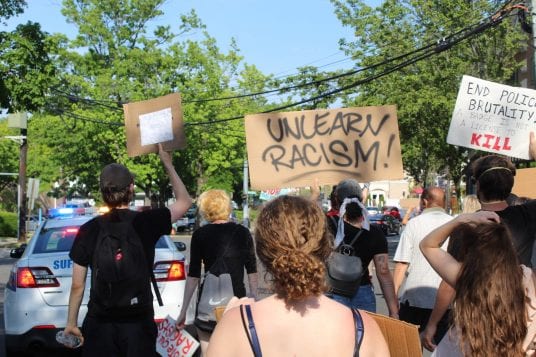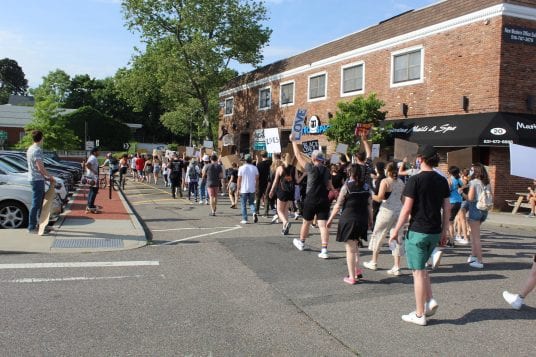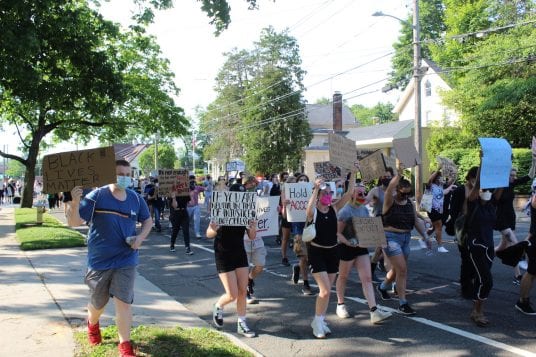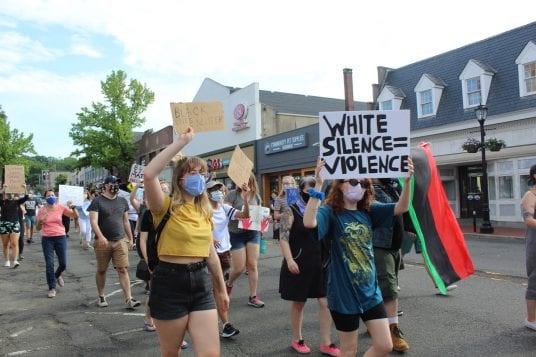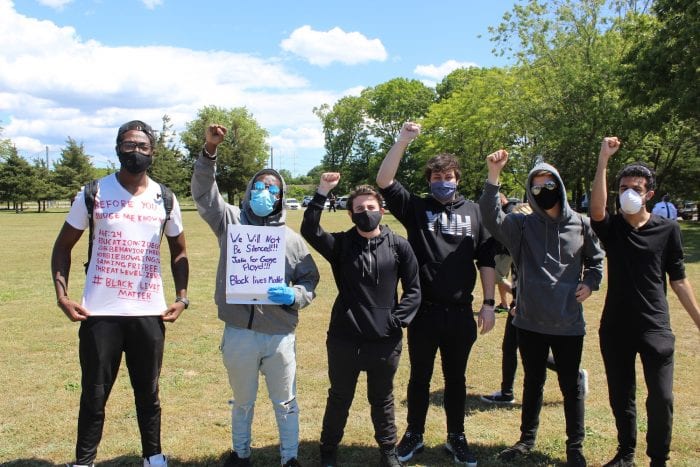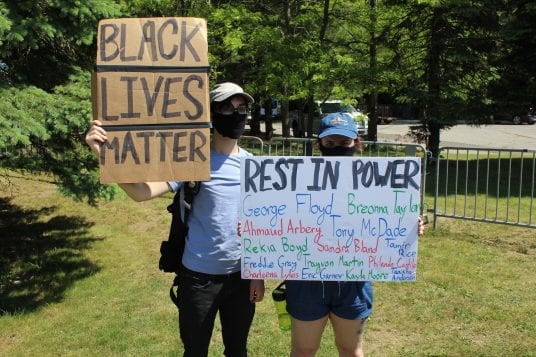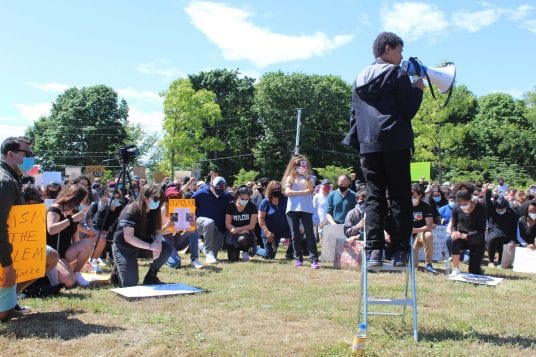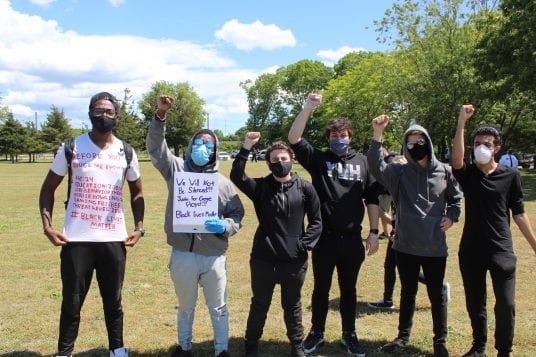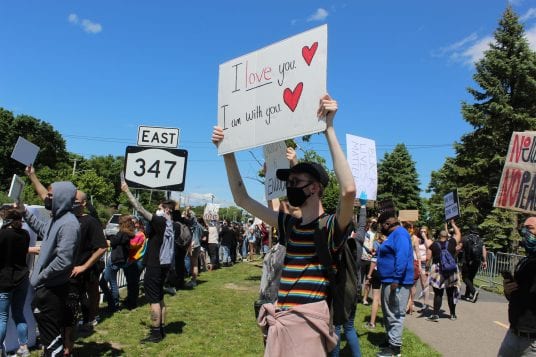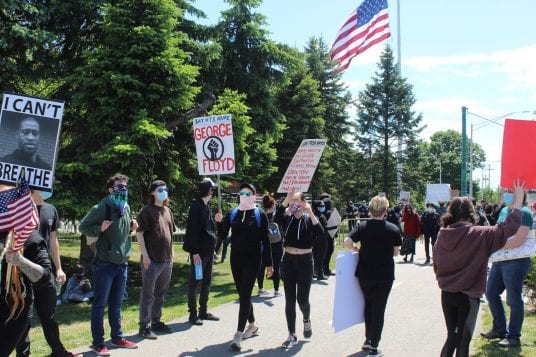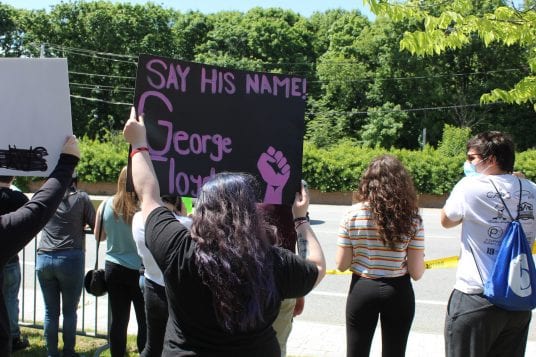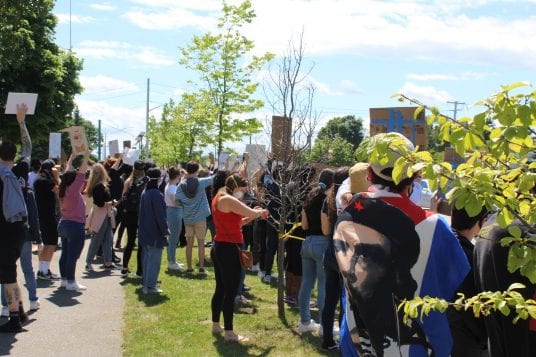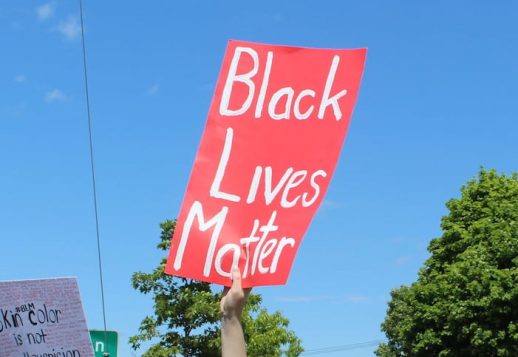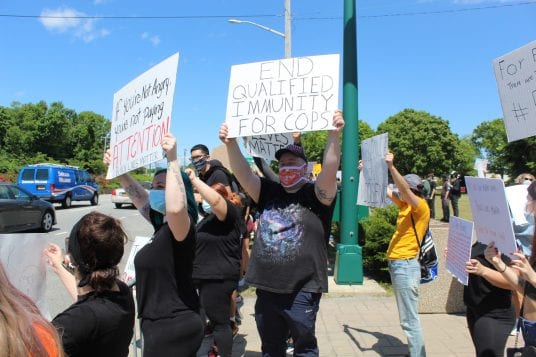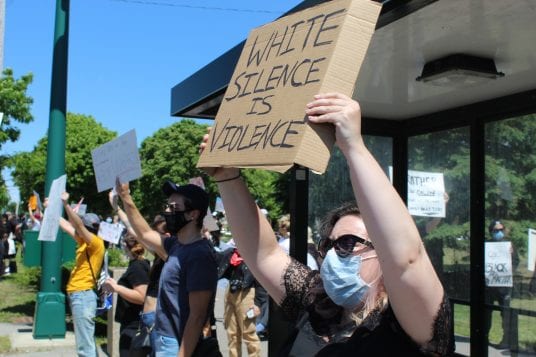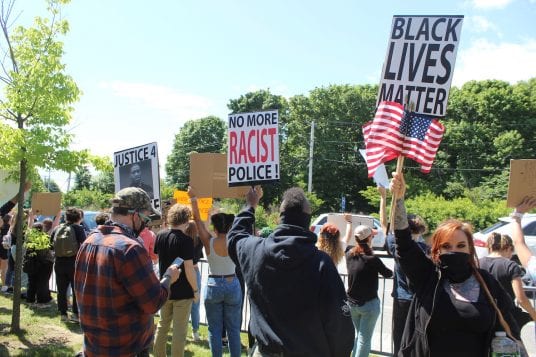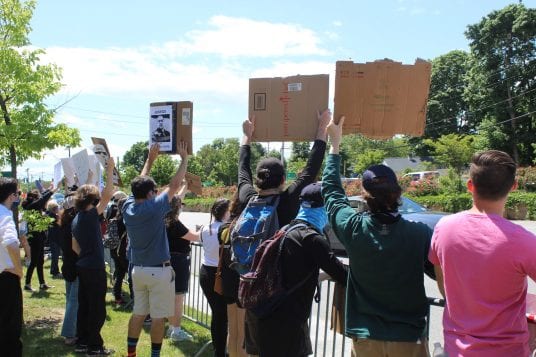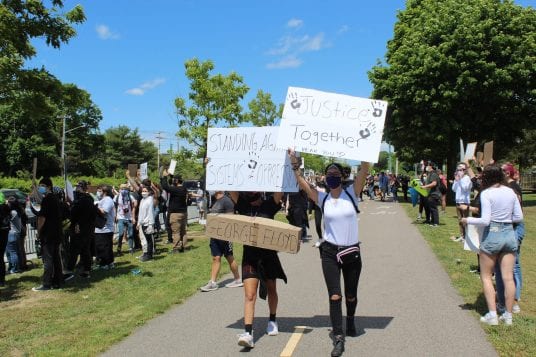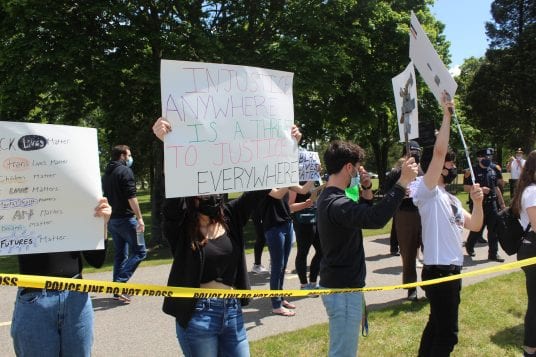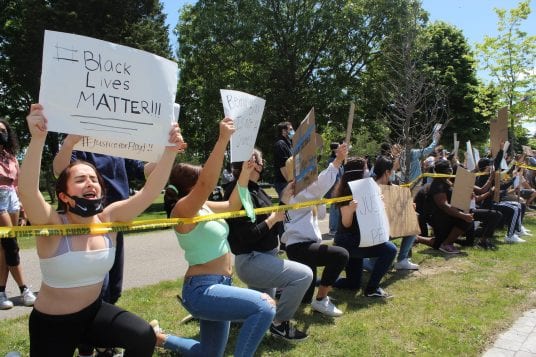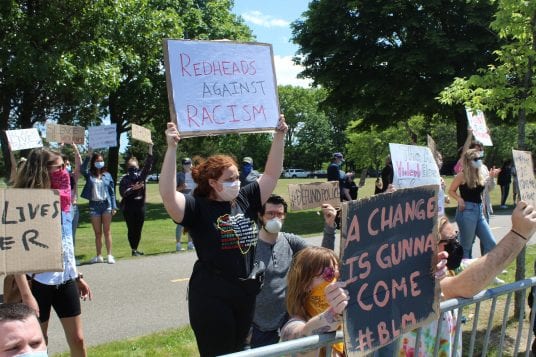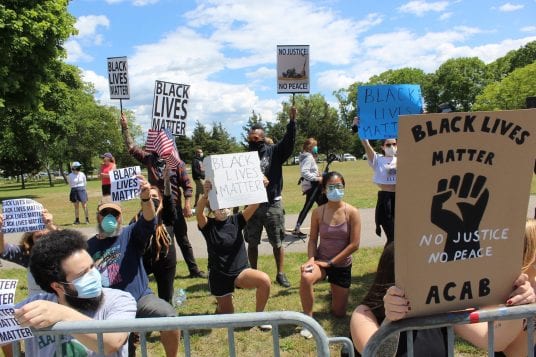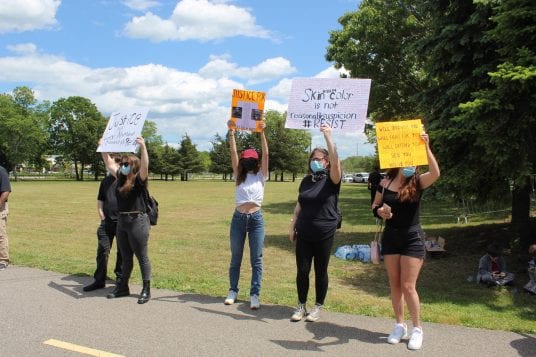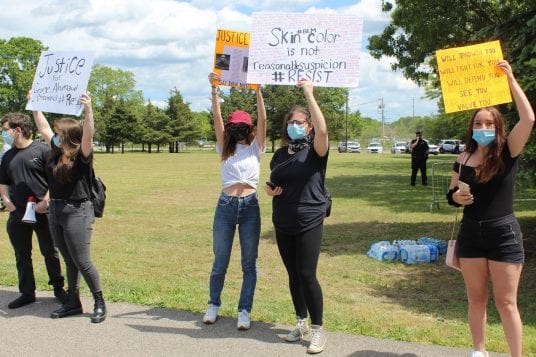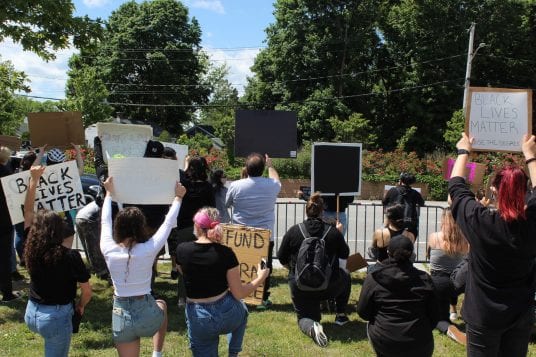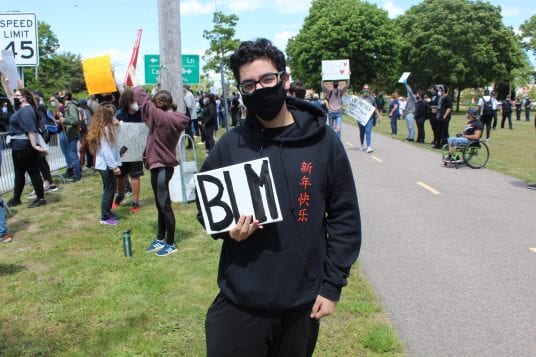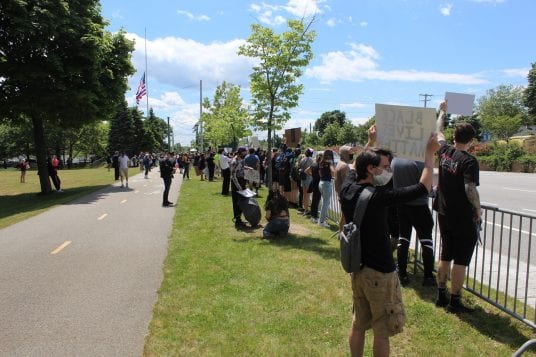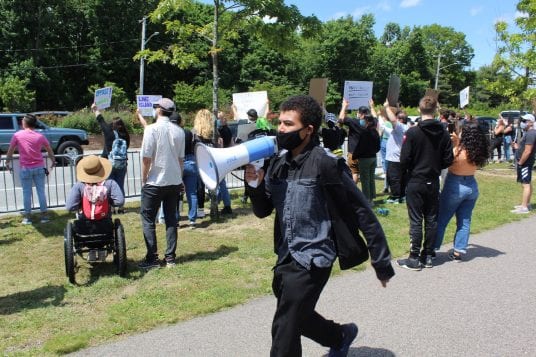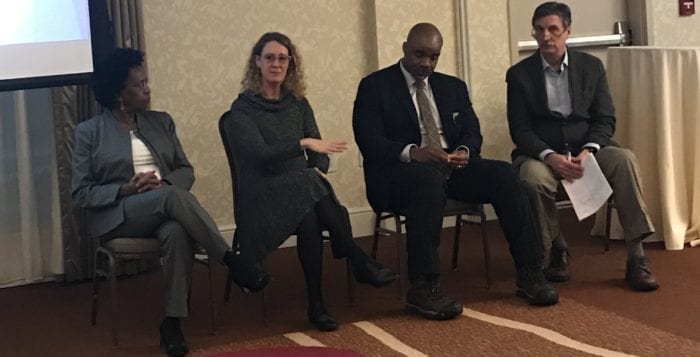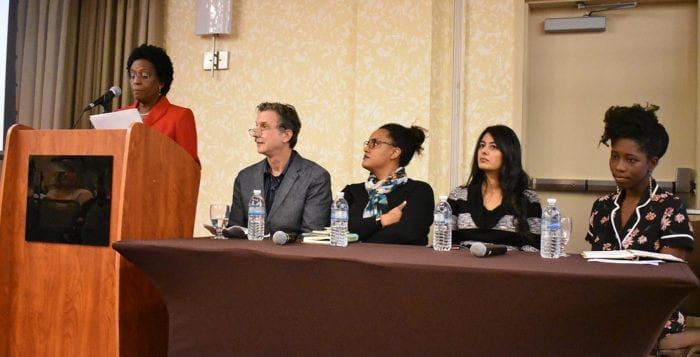Hundreds of cars huddled in the right lane going east along Veterans Memorial Highway Sunday, June 7. Streaming off Northern State Parkway, the caravan of cars came from Nassau County’s seat of power to Suffolk, all to promote black lives and black efficacy after the death of Minneapolis man George Floyd.
In a day which saw other protests along the North Shore including in Stony Brook and Smithtown, the rally that took place at the Suffolk County executive seat in Hauppauge drew crowds from as far east as the north and south forks and as west as the far edges of Nassau County as part of the NAACP Caravan for Change. Protesters called for an equality of access to housing, loans for businesses and a general end to prejudice. In addition to banning police use of chokeholds and stricter repercussions for officers who commit unwarranted violence, they also prompted bills in Albany to end what’s known as 50-a, a provision in the state’s civil rights code that heavily restricts people from accessing police service records.
Tracey Edwards, the Long Island Regional Director of the NAACP, said one can be for police, but also be against police misconduct. Between speakers at the podium, she added it was also time to recognize the numerous young activists who are helping to lead many protests of the past several days.
“One of the main things we need to do as a community is to identify the young leaders, and pass the baton to them,” Edwards said. “It’s critical that we let young people lead.”
Three young members of the Huntington community have led some of the first protest marches in Huntington and spoke at the June 7 rally about their efforts and examples of racism they experienced while marching. Owner of the Italian restaurant Tutto Pazzo, Luigi Petrone, called protesters animals and savages and said he wanted to throw watermelons at those marching.
“We were angry naturally, but instead of going about it in an irrational way, we decided to reorganize and mobilize again, but this time take the protest directly to his restaurant,” Kenny Charles, one of the three young protest organizers said. He added they received massive support from the community for their protest in front of Pazzo, with people even dropping off watermelons to protesters in response to Petrone’s comments.
The owner of Pazzo has since shared apologies for his comments in a video posted online.
They said the point of their protests is to show the solidarity of the community, and express the worth of their money, which would not go to support business owners who would discriminate against them. Instead, it should go to supporting and promoting black-owned businesses.
Suffolk County Executive Steve Bellone also spoke at the rally. He cited the county replacing Tom Spota as county district attorney who was “systematically targeting black males,” he said, also citing adding more diversity to the county’s Department of Human Resources, Personnel and Civil Service
A few members of the assembled crowd yelled back at him saying “what are you planning?”
“When we talk about systemic change in law enforcement, that is needed, but that is not enough.” Bellone said. “We need systemic structural change in housing, in education and representation in all forms of our government.

